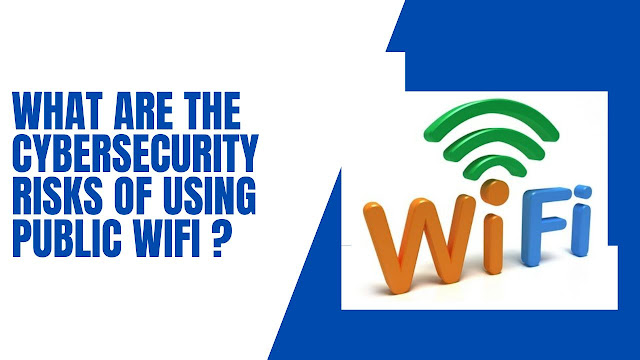The environment we live in is getting more and more interconnected. Wi-fi is becoming more widely available and is now a requirement for living in the modern world.
You may have utilized public wi-fi at some point in the past, regardless of whether you work remotely, travel regularly, or are passionate about being connected while on the go.
Everywhere you go, including hotels, airports, railway stations, libraries, and transportation areas, you can find them. Although they are quite useful, they are not as harmless as they would seem.
The risks associated with an open wi-fi network are examined in this article along with the precautions that should be taken.
The Era of ‘Work From Anywhere
While the epidemic began in 2020, cyberattacks also peaked during this time. Working professionals around the world retreated to their home offices under orders to follow the lockdown.
The remote work model persisted for many people even after the economy began to improve.
It may be inferred that having the option to work outside of the office has led many employees to choose public locations to do their work, leaving organizations and employees more susceptible to cyber-attacks.
Increase in Incidents of Cyber Attacks
The unsettling feature of this new culture is the growth in cyberattacks that coincides with the expansion of remote employment.
According to statistics, there has been a rise in the number of reported events, and this increase over the pre-pandemic period was greater than 100%. The perpetrators have developed their methods and created complex strategies to avoid detection.
The need to safeguard oneself against the dangers of public wifi has never been greater. All businesses and individuals in every sector need to know this, but some are more vulnerable than others.
The Risks Associated with Public Wi-Fi
Most people who connect to unsecured wi-fi networks while working are unaware of the danger of unintentionally disclosing private information online, which could result in a serious issue if a trained hacker uses it.
People should be cautious of the frequent risks of threats when using public wifi for businesses and individuals because modern networks are not without risk.
1. Man-in-The-Middle Attacks: Man-in-the-middle (MITM) attacks are one of the most common dangers to public wifi networks.
In essence, this is a type of listening in. Information is transported from one point to another when a machine connects to the internet, and weaknesses can let an attacker slip in and seize the data.
As a result, what was once considered private is no longer private. Even an MITM attack by scammers using phishing emails is possible.
In this instance, they pose as a source that the user trusts and coerce them into disclosing personal information.
2. Malware and Viruses: The forced installation of malware on consumer devices is another frequent danger on open networks.
Any programming and applications written to damage devices or intercept information fall under this general category.
Hackers have the ability to infect the network, which spreads to all associated devices. Malware may wreak havoc and spy on the machines it infects.
It comes in many different forms. A particular type of malware called a virus is activated and duplicated by a person and spreads through a host file. 'Worms' are more destructive since they can proliferate on their own without assistance from humans.
3. Unencrypted Network Connections: When utilizing an encrypted network, data is transferred in secret code between the device and the wifi router.
As a result, no one can access the data without a security key. When utilizing public wi-fi, users may never be certain that the network is encrypted.
A scammer can more easily access online traffic when linked to an unsecured network, and they can then exploit it for shady operations like MITM assaults.
4. Network Snooping and Sniffing : When hackers purchase specialized software kits and equipment to let them eavesdrop on the wi-fi signals, wi-fi snooping and sniffing takes place.
The technique might provide hackers access to everything the users own, all of their online behavior, and even the user's online experience.
5. Vulnerability of Login Credentials: Login credentials become vulnerable when they have weak or obvious passwords.
By making sure that all passwords for apps and websites are distinct and strong, this may be avoided.
6. Alerts on System Updates: Hackers are always developing new techniques for controlling smartphones. Fake alerts with the ability to exfiltrate data are one method of data theft.
7. Malicious Hotspot Networks: Because the name may sound credible, rogue hotspot networks can serve as entry points to fool people into connecting to what they would believe is a legitimate network. After then, cybercriminals in charge of it can access personal data.
Hot to Stay Safe over Public wi-fi Networks?
- Using a VPN to protect against traffic with end-to-end encryption
- Keep Bluetooth non-discoverable and switch off auto-connect with wi-fi.
- Installing firewall
- Create strong and unique passwords
- Companies should always have anti-malware and anti-sniffing protection.
- Frequent running of vulnerability scans to identify and mitigate threats
- Sticking to ‘HTTPS’ websites
- Utilizing browser extensions
- File-sharing should be turned off
- Operating systems should always be updated
Conclusion
Cyberattacks are becoming more prevalent globally, which highlights the need for tighter controls and personnel with higher levels of training and expertise.
Organizations and individuals need to be more aware of the risks that can compromise a system by infiltrating it.
Thus, precautions must be taken to establish strict controls to reduce the hazards. Avoiding using public WiFi can help keep you safer.
Airspot network is the leading
public wifi service provider in surat, offering high-speed internet services. We are India’s first ISO accredited broadband service provider using state of the art technology .

Comments
Post a Comment